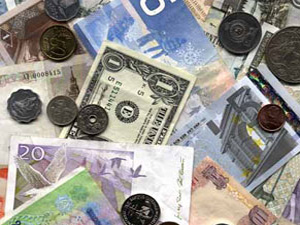
Fitch affirms Kazakhstan’s Kazkommertsbank at ’B-’; outlook negative
The affirmation reflects Fitch’s view that the bank should have sufficient liquidity to repay near-term maturities. However, the rating level and Negative Outlook continue to reflect the bank’s very weak asset quality and potential need for future recapitalisation.
Highly liquid assets as of end-August 2009 (comprising cash, its equivalents and correspondent accounts) were equal to around USD780m based on local GAAP, while KKB could additionally draw on its USD260m securities book and around USD370m of maturing interbank placements to raise liquidity. This, combined with operating revenues, should be enough to meet USD725m of large ticket international debt repayments maturing in Q409, as well as USD280m equivalent of interest coming due before year-end, but provides little cushion against unexpected outflows of customer funds or other negative liquidity events.
Asset quality has continued to deteriorate sharply, with 90-day overdue loans reported at 9.9% under local GAAP at end-July 2009, up from 6.3% at end-Q109, one day overdues increasing to 20.5% from 12.4% during the same period and the regulatory NPL proxy (doubtful 5 and loss loans as a proportion of individually assessed exposures) rising to 25.9% from 16%. However, in Fitch’s view, even these reported impairment figures may under-estimate the scope of asset quality problems at the bank, with a significant part of the portfolio already restructured and the majority of the bank’s largest loans showing signs of impairment, but not always captured in reported asset quality numbers. The level of accrued interest income has increased to 6.5% of gross loans at end-H109 (based on IFRS accounts), equal to a large 41% (albeit on a gross basis) of equity, which suggests significant restructuring in the loan book and also undermines the quality of capital.
The regulatory capital ratio of 13.4% at end-August 2009 and reserves/loans ratio of 23% provide significant loss absorption capacity, but even this may yet prove inadequate, in the agency’s view, given the scope of asset quality problems and concerns about the quality of capital and earnings. The still high proportion of foreign borrowings (end-H109: 46% of liabilities) and growing dependence on government and public sector funding is a further weakness, although international repayments are negligible in 2010 and moderate in 2011, and the Kazakh authorities seem unlikely to withdraw funding from the bank in a way which would undermine its liquidity position.
At the same time, the ratings continue to reflect KKB’s broad local franchise (the largest bank in Kazakhstan by assets with a 21% market share at end-August 2009) and the potential for moderate government capital support. However, such support cannot be relied upon, in Fitch’s view, given KKB’s increasing asset quality problems and the government’s apparent reluctance to provide further substantial capital support to the country’s banks. That said, Fitch also notes that a protracted or even ultimately failed restructuring process at BTA Bank and/or Alliance Bank (both rated ’RD’ (Restricted Default)) could be mildly credit positive for KKB, given that this would likely increase the disincentives for the Kazakh authorities to allow a restructuring of KKB’s liabilities.
In Fitch’s rating criteria, a bank’s standalone risk is reflected in Fitch’s Individual ratings and the prospect of external support is reflected in Fitch’s Support ratings. Collectively these ratings drive Fitch’s Long- and Short-term IDRs.
Rating actions are as follows:
Long-term foreign currency IDR: affirmed at ’B-’; Negative Outlook
Long-term local currency IDR: affirmed at ’B-’; Negative Outlook
Short-term foreign currency IDR: affirmed at ’B’
Short-term local currency IDR: affirmed at ’B’
Support rating: affirmed at ’5’
Individual rating: affirmed at ’E’
Support Rating Floor: affirmed at ’No Floor’
Senior unsecured debt: affirmed at ’B-’; Recovery Rating ’RR4’
Subordinated debt: affirmed at ’CC’; Recovery Rating ’RR6’
Tier 1 perpetual subordinated notes: affirmed at ’CC’;
Recovery Rating ’RR6’